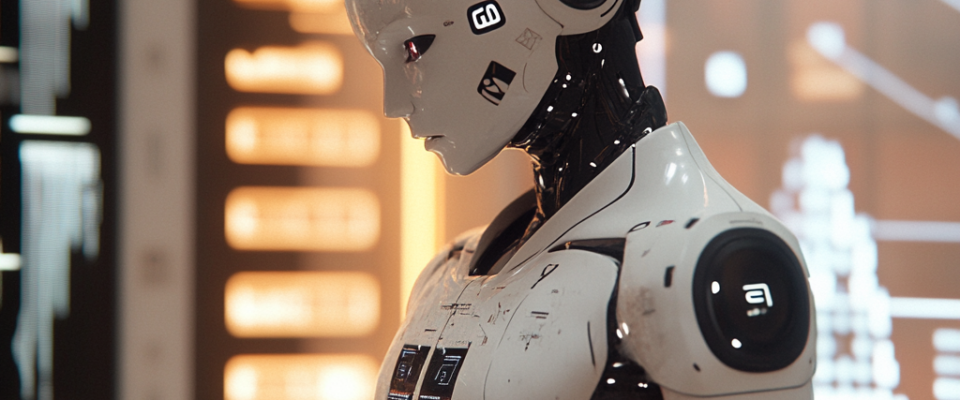Modern technologies are rapidly changing the understanding of the capabilities of the human body. If previously mechanical improvement of the body was limited to prostheses and implants, and medicine could only treat diseases, today completely different prospects are opening up for humanity. At the junction robotics, genetic engineering and artificial intelligence A new scientific discipline is being formed – body engineering.
Robots and biomechanics – the merging of technology and the body
Robotization of the human body is no longer limited to prosthetics and exoskeletons. Modern technologies make it possible not only to replace what was lost, but also improve existing body functions.
Exoskeletons are just the tip of the iceberg. They are used in medicine for rehabilitation after injuries, in the army to increase the physical strength of soldiers, and in industry to reduce the burden on workers. But much more interesting developments are associated with implantable neural interfaces, which allow you to control mechanical limbs with the power of thought.
Another key aspect is the new generation of cyber prosthetics. They don’t simply replace a lost arm or leg, but integrate with the nervous system, providing feedback to the brain. The man begins feel artificial fingers, feel the pressure and texture of objects. These technologies not only help people with disabilities, but also open up the prospect of creating “improved” bodies. If robotic limbs turn out to be more functional than biological ones, how many will want to refuse such an upgrade?
Ethical issues in this area are becoming increasingly relevant. Is society ready for the fact that cyborgs will no longer be heroes of science fiction, but will become everyday reality? If technology makes it possible to increase physical strength, endurance or reaction speed, will this lead to new social inequality, where “modified” people will have advantages over ordinary people?
Genetic engineering and DNA editing
Intervention in the genetic code is already becoming possible thanks to DNA editing technologies such as CRISPR. This tool allows you to make targeted changes to the genome, eliminating mutations that cause hereditary diseases or changing certain characteristics of the body.
- Treatment of hereditary diseases. Genetic mutations that cause serious diseases can be eliminated at the embryonic stage, saving a person from incurable pathologies.
- Strengthening the immune system. Research shows that it is possible to create resistance to viruses, bacteria and even cancer.
- Managing the aging process. Certain gene mutations are associated with lifespan, and correcting them can slow aging.
- Genetic modification of appearance. Theoretically, you can change eye color, hair, height and other physical parameters.
- Improved cognitive abilities. Some scientists believe that it is possible to artificially increase the level of intelligence by changing the way the brain works.
However ethical issues they are especially acute here. If medicine makes it possible not only to treat diseases, but to improve physical and mental abilities, won’t this lead to the creation of a “genetic elite”? Will such technologies be available to everyone or will they become the privilege of the rich?
Artificial intelligence in medicine and bioengineering
AI is already actively used in medicine, but its role in the engineering of the body is just beginning to take shape. One of the key areas is big data analysis – algorithms are able to identify complex patterns in genetics, predict the development of diseases and select personalized treatment methods.
Besides, AI accelerates the development of new drugs, simulating their interaction with the cells of the body. This significantly reduces the time required for clinical trials, making treatments more accessible and effective.
Another important direction is development of “smart” implants. These devices not only replace damaged organs, but also analyze the state of the body, adapting to individual needs. For example, smart pacemakers can change the heart rate depending on physical activity and emotional state.
But AI also poses potential threats. Is it possible to have a scenario in which algorithms will begin to make decisions for doctors? Who will be responsible for AI errors in medicine? These issues require clear legislative regulation.
Cyborgs and hybrid life forms
Modern research goes beyond conventional implants and bioprostheses. Scientists are developing hybrid systems combining biological tissues with artificial components. This could be growing organs using synthetic materials or integrating neural networks with computer chips.
This breakthrough in science confronts society with both incredible prospects and difficult questions. Will technology be able to radically change a person, making him stronger, smarter and more resilient? Is humanity ready for merging with machines, managing genes and introducing AI into medical processes? These questions have ceased to be science fiction – science is actively developing solutions that can prolong life, enhance physical abilities and even radically transform human biological nature. However any innovation carries with it not only opportunities, but also serious risks – moral, legal and social.
The question is whether humans will be able to control these processes, or one day technology will get out of control, changing our nature forever.
Extending life and slowing down aging
The development of body engineering is directly related to the issue of increasing life expectancy. Scientists study methods tissue regeneration, replacement of aging cells and restoration of damaged organs.
The development of organismal engineering can lead to incredible achievements, but it also carries enormous risks. There may be scenarios in which technology spins out of control, creating genetically enhanced humans, a new level of social inequality, or even a threat to the natural development of humanity.
If we can modify the body and mind, won’t this lead to a loss of humanity? Perhaps in a few decades the division between ordinary and “enhanced” people will become a reality, and the question of “what does it mean to be human” will change forever.
Body engineering technologies open up enormous prospects for humanity. However they bear threat of social and moral crisis, if they are not properly regulated.
Science is on the verge new era, where a person will be able to control his body, change DNA, prolong life and merge with machines. However, the consequences of these changes remain unpredictable.
The future of body engineering promises incredible opportunities, but also poses formidable challenges. We are faced with a choice: use technology to improve humanity or face social and ethical issues that could change the very nature of life.
The main risks are ethical and social consequences. The possibility of creating genetically enhanced humans, the uneven distribution of technology and potential threats to the natural evolutionary process.
For now, technologies remain expensive, but over time they are likely to become widespread, although the risks of dividing society into “improved” and “ordinary” remain.

